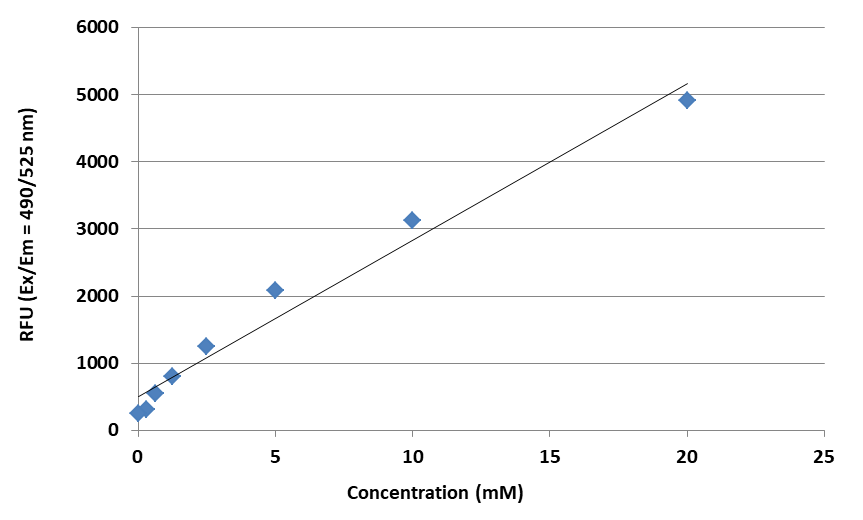Quantifying sodium ions is important in various scientific fields and industries, including biochemistry, medicine, environmental analysis, and food science etc. There are several methods commonly used to quantify sodium ions, including flame photometry, ion-selective electrodes (ISE), atomic absorption spectroscopy and fluorescence spectrophotometry. Flame photometry and atomic absorption spectroscopy require the inflammation of the samples. They are tedious to use and require expensive and sophisticated instrumentation. Ion-selective electrodes require large volumes of samples and often have low selectivity. Among all the methods, fluorescence spectrophotometry is the most convenient method for quantifying sodium ions. Fluorescence spectrophotometry involves complexing sodium ions with specific reagents and measuring the resulting fluorescence changes. Amplite® Fluorimetric Sodium Ion Quantification Kit uses our robust sodium ion indicator dye, SoNa™ 520, which exhibit great fluorescence intensity enhancement upon binding to sodium ions. SoNa™ 520 is perhaps the most robust sodium ion indicator with high selectivity. It enables the kit to be useful for the rapid determination of sodium concentrations in a variety of samples compared to the other commercial sodium ion assays. This microplate-based assay kit requires extremely small amount of sample, it is particularly suitable for the determination of sodium ion concentration in microvolume format.


| Catalog | Size | Price | Quantity |
|---|---|---|---|
| 21325 | 100 Tests | Price |
| Excitation (nm) | 491 |
| Emission (nm) | 511 |
| H-phrase | H303, H313, H333 |
| Hazard symbol | XN |
| Intended use | Research Use Only (RUO) |
| R-phrase | R20, R21, R22 |
| Fluorescence microplate reader | |
| Excitation | 490 nm |
| Emission | 525 nm |
| Cutoff | 515 nm |
| Recommended plate | Solid black |
| Telephone | |
| Fax | |
| sales@aatbio.com | |
| International | See distributors |
| Bulk request | Inquire |
| Custom size | Inquire |
| Technical Support | Contact us |
| Request quotation | Request |
| Purchase order | Send to sales@aatbio.com |
| Shipping | Standard overnight for United States, inquire for international |

